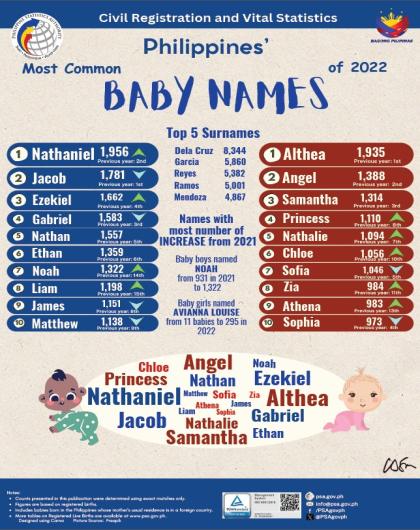Birth, Marriage, and Death Statistics for 2023 (Provisional, as of 30 April 2024)
Explanatory Notes
Data on births presented in this release were obtained from the Certificates of Live Birth (Municipal Form No. 102) that were registered at the Office of the City/Municipal Civil Registrars all throughout the country and forwarded to the Philippine Statistics Authority. Information presented include registered births which occurred from January to December 2016. Figures presented are not adjusted for under-registration. Births of Filipinos occurred abroad which were reported to the Philippine Foreign Service Posts are presented in a separate report.
Seventeen births per thousand population
In 2016, a total of 1,731,289 live births was registered which is equivalent to a crude birth rate (CBR) of 16.8 or about 17 births per thousand population.
The number of registered live births showed an increasing trend from 2006 to 2008, plateau from 2008 to 2012 and downward from 2012 to 2016. The decrease in the last four years was 3.3 percent, from 1,790,367 live births in 2012 to 1,731,289 recorded births in 2016. However, this does not mean that the number of babies born in the country is on a decline, as some may not have been registered. (See Figure 1 and Table 1)
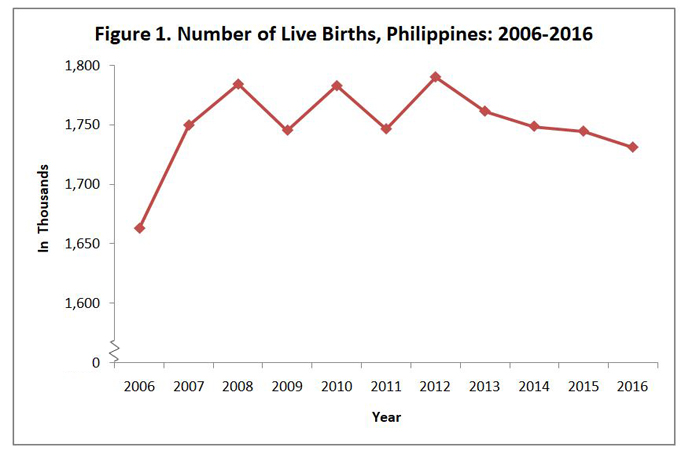
More males born than females
More males (903,694 or 52.0%) were born than females (827,595 or 48.0%) which resulted in a sex ratio of 109 males per 100 females.
On the average, there were about 4,730 babies born daily or about 197 babies born per hour or approximately three babies born per minute.
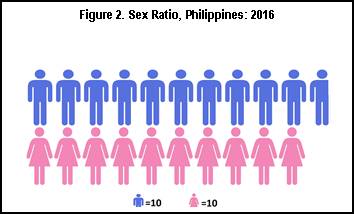
Highest occurrence of births in NCR
Of the total live births, 57.7 percent were born in Luzon, 19.4 percent in Visayas and 22.9 percent in Mindanao. Among the regions of the country, the National Capital Region (NCR) recorded the highest number of birth occurrences of about 13.9 percent. Second in rank was CALABARZON (13.6%) and the third was Central Luzon (10.9%). (See Figure 3 and Table 2)
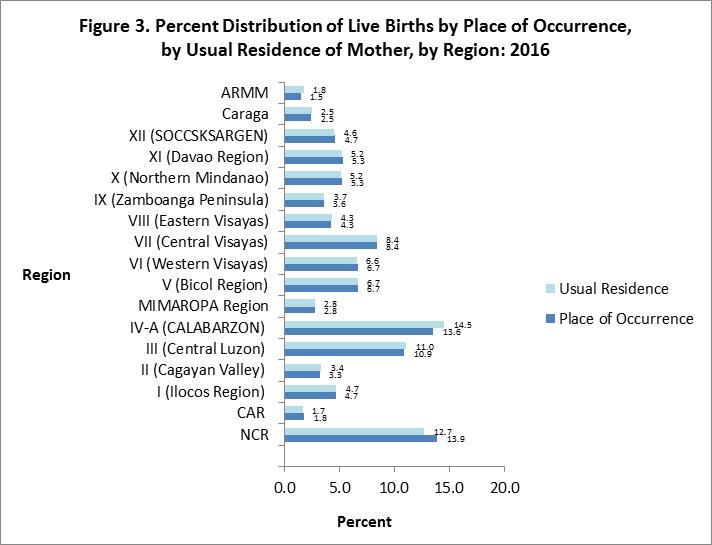
More babies born outside the usual residence of the mother
The difference between the place of birth by occurrence and place of birth by usual residence of the mother by region is shown in the last column of Table 2. Seven out of the 17 regions reported positive differentials in the number of births by place of occurrence. These positive differentials may be indicative of expectant mothers giving birth outside of their usual place of residence due to better health care facilities and social services in the receiving region.
In Luzon, the receiving region was NCR which accounted for 21,125 births. Notably, expectant mothers from CALABARZON, Central Luzon and other areas in Luzon preferred to give birth in NCR. (See Figure 3 and Table 2)
Nine in ten birth deliveries medically attended
Of the total number of births in the country, 91.6 percent birth deliveries were attended by health professionals which may either be a physician, a midwife or a nurse. (See Figure 4, Tables 3a and 3b)
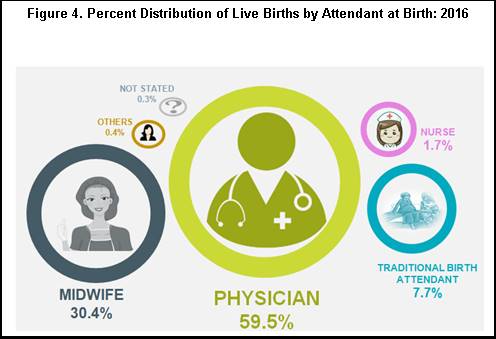
The number of births by place of occurrence and by usual residence of mother showed a remarkable proportion on births attended by health professionals in the 16 regions. This is indicative of improving health services in terms of maternal and child health care. Among regions, only Autonomous Region in Muslim Mindanao (ARMM) showed a very low proportion of medically attended births. Half of the births that occurred in the region were attended by traditional birth attendants (hilot/unlicensed midwife). (See Tables 3a, 3b and 3c)
49.2 percent of babies born to unwed mothers
Almost half (851,088 or 49.2%) of the total registered live births in 2016 were born out of wedlock. The three regions that recorded the highest number of illegitimate children born in 2016 by usual residence of mother were CALABARZON (135,405), NCR (131,670) and Central Luzon (92,867).
The proportion of illegitimate babies in seven regions of the country, as well as in foreign countries as usual residence of mother were more than half of its total births, i.e., Eastern Visayas (60.8%), NCR (59.9%), CALABARZON (53.9%), Davao (52.4%), Central Visayas (51.9%), Foreign Countries (51.3%), Bicol (50.6%), and Caraga (50.2%). (See Table 4)
More babies born to teenage mothers
Babies born to teenage mothers (203,085) were more than those babies sired by teenage fathers (52,070). Moreover, babies sired by fathers aged 50 years old and over (28,625) were far more than babies born to mothers of the same age group (387).
(See Table 5)
The modal age group of childbearing in 2016 was at 20-24 years old. The highest frequency of live births (487,763 or 28.2%) belonged to mothers in this age group. On the other hand, fathers aged 25-29 were recorded to have sired the highest frequency of live births (444,205 or 24.4%).
The median age of mothers giving birth was 26 and for fathers was 29 years old.
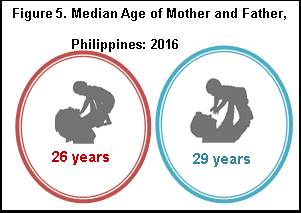
LISA GRACE S. BERSALES, Ph.D.
Undersecretary
National Statistician and Civil Registrar General
See more at the Vital Statistics landing page.

